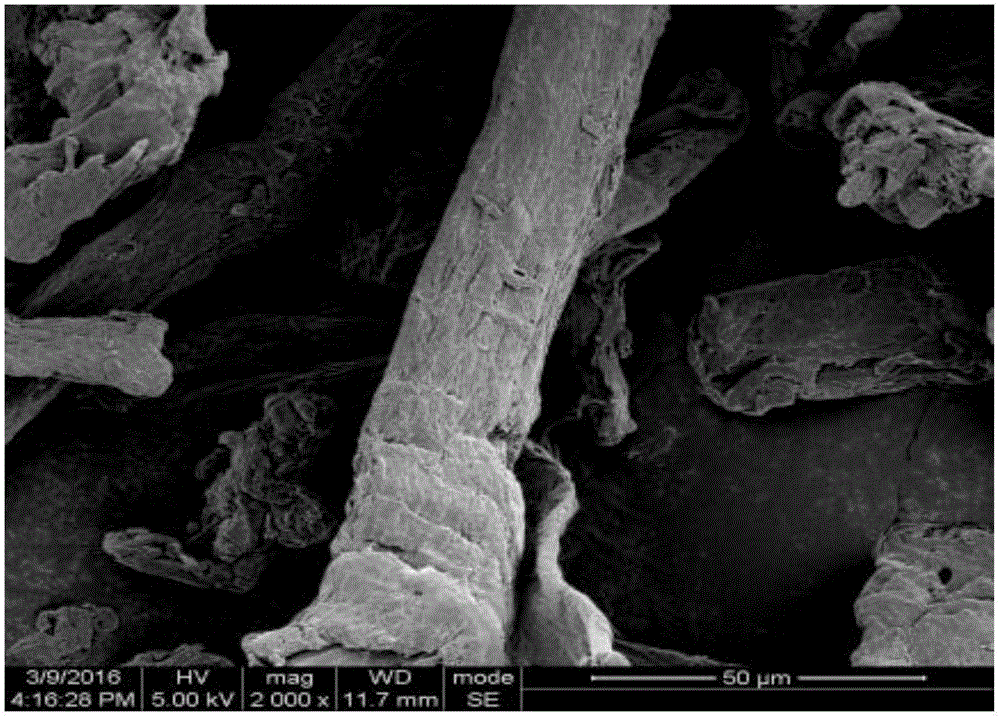Cellulose graft modification method by using supercritical carbon dioxide as solvent
A technology of graft modification and carbon dioxide, applied in the field of polymer chemistry, to achieve the effect of simple operation, low cost and environmental friendliness
- Summary
- Abstract
- Description
- Claims
- Application Information
AI Technical Summary
Problems solved by technology
Method used
Image
Examples
Embodiment 1
[0054] (1) Microcrystalline cellulose adopts the method for dissolving at low temperature to prepare a clear and transparent cellulose solution with a mass fraction of 4%;
[0055] (2) Add 2ml of the cellulose solution into a 12-hole bacterial culture plate, and let it stand for 36 hours at a gel temperature of 30° C. to prepare a cellulose gel;
[0056] (3) Repeatedly soaking the obtained cellulose gel with deionized water until the aqueous solution is neutral to obtain regenerated cellulose hydrogel;
[0057] (4) Repeatedly soak the regenerated cellulose hydrogel with 5% glycerol solution for 24 hours, plasticize the regenerated cellulose hydrogel, soak the plasticized hydrogel in liquid nitrogen ( -170°C) for 1-2 minutes, and then carry out vacuum freeze-drying for 12 hours to obtain regenerated cellulose airgel; during vacuum freeze-drying, the drying temperature is -20°C--55°C, and the vacuum degree during drying is 5-50Pa .
[0058] Comparative example one of embodimen...
Embodiment 2
[0070] (1) Place the regenerated cellulose airgel prepared in Example 1 in a vacuum oven at 40°C and dry for 48 hours;
[0071] (2) Add a certain proportion of regenerated cellulose airgel, lactide, and stannous octoate into the dried high-pressure reactor; after the sealing work is done, enter atmospheric carbon dioxide for gas replacement, and drain the reactor Inner air; the amount of regenerated cellulose airgel is 12.5% of the mass of lactide, and the amount of stannous octoate is 1% of the mass of lactide;
[0072] (3) After the gas replacement is completed, at room temperature T 0 A certain amount of high-pressure carbon dioxide is passed into the reactor under the condition that the pressure is P 0 , P 0 is given by the preset reaction pressure P 1 and preset reaction temperature T 1 by formula Calculated; the carbon dioxide reaches a supercritical state by raising the temperature of the reactor, and then reacts; the reaction temperature T 1 =120°C, reaction p...
Embodiment 3
[0093] (1) Place the regenerated cellulose airgel prepared in Example 1 in a vacuum oven at 40°C and dry for 48 hours;
[0094] (2) Add a certain proportion of regenerated cellulose airgel, lactide, and stannous octoate into the dried high-pressure reactor; after the sealing work is done, enter atmospheric carbon dioxide for gas replacement, and drain the reactor Inner air; the amount of regenerated cellulose airgel is 25% of the mass of lactide, and the amount of stannous octoate is 1% of the mass of lactide;
[0095] (3) After the gas replacement is completed, at room temperature T 0 A certain amount of high-pressure carbon dioxide is passed into the reactor under the condition that the pressure is P 0 ;P 0 is given by the reaction pressure P 1 and reaction temperature T 1 by formula Calculated; by raising the temperature of the reactor to make it reach a supercritical state, and then react; the reaction temperature T 1 =120°C, reaction pressure P 1 =22MPa, the react...
PUM
| Property | Measurement | Unit |
|---|---|---|
| specific surface area | aaaaa | aaaaa |
| pore size | aaaaa | aaaaa |
| specific surface area | aaaaa | aaaaa |
Abstract
Description
Claims
Application Information
 Login to View More
Login to View More - R&D
- Intellectual Property
- Life Sciences
- Materials
- Tech Scout
- Unparalleled Data Quality
- Higher Quality Content
- 60% Fewer Hallucinations
Browse by: Latest US Patents, China's latest patents, Technical Efficacy Thesaurus, Application Domain, Technology Topic, Popular Technical Reports.
© 2025 PatSnap. All rights reserved.Legal|Privacy policy|Modern Slavery Act Transparency Statement|Sitemap|About US| Contact US: help@patsnap.com



